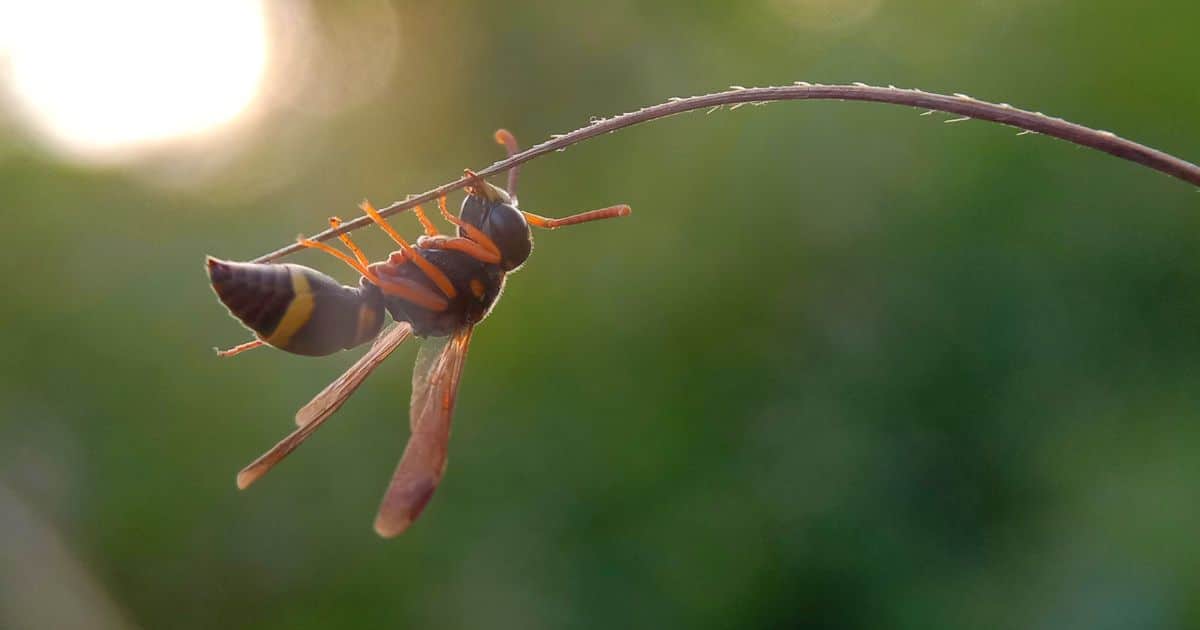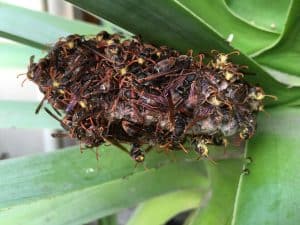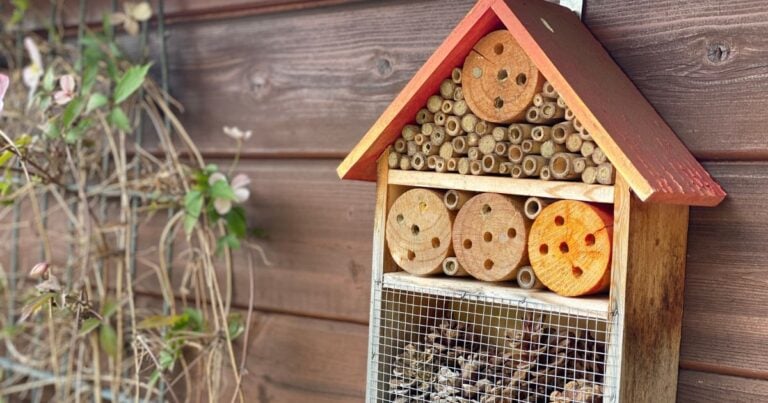Common Paper Wasps In Melbourne
There are more than 12,000 species of native wasps in Australia. The one that’s most likely to be found around Melbourne’s suburbs – and most likely to become a pest – is the Common Paper Wasp (Polistes humilis).

There are 11 species of Polistes found in Australia, of which P. humilis is the most common.
Two subspecies have been identified: P. humilis humilis occurs in southern Queensland, New South Wales, Victoria, South Australia and New Zealand, where it was accidentally introduced in the 1880s.
P. humilis synoecus is found in northern New South Wales, Queensland, the Northern Territory and Western Australia, where it was also an accidental introduction in about 1950.
The Common Paper Wasp is about 10-15mm in length (slightly longer than a honey bee), with a slender body, a very narrow waist, a pointed abdomen and long thin legs and wings. The body has brown, black and yellow bands.
In Melbourne, Common Paper Wasps are common around the outside of homes and in gardens and are often mistaken for European Wasps.
Common Paper Wasps are social (eusocial) insects that form small colonies of up to 20 individuals. Paper wasp nests are constructed from a grey, papery material that consists of wood fibre which is chewed and mixed with the wasps’ saliva.
The nests have a distinctive cone-shaped appearance, with multiple hexagonal cells visible from below, and have a maximum diameter of 10-12cm.
In the suburbs of Melbourne, they are commonly situated under eaves and pergolas, or in walls, shrubbery and fences – often they hang by a short stalk. Interestingly, Common Paper Wasps are known to reutilise old nests.
The adult paper wasps feed mainly on nectar, while the larvae consume caterpillars and other insect prey, which is caught and then chewed by the adults. The larvae develop in the hexagonal cells of the nest, which are capped when they are ready to pupate. Common Paper Wasps also require considerable moisture and are regularly seen around backyard swimming pools and ponds.
Most adult Common Paper Wasps die in winter, although sometimes colonies may hibernate and successfully survive the colder months. Generally, colonies are founded in spring or summer by a single fertile female, which lays down the beginnings of the nest (or appropriates an old one) and then produces female workers to take over the responsibility of nest construction, foraging for food and rearing the young.
It’s common for colonies to contain multiple queens (an average of two has been observed). Since each is only fertilised by a single male, this increases genetic diversity. In late summer and early autumn, fertile females and male drones are produced. Dispersal appears to rely on the males, which typically do not reproduce in their native colony. The nest is then usually abandoned and fertilised females enter hibernation.
Common Paper Wasps are important pollinators, however, they are indiscriminate, and may therefore also contribute to the success of invasive, introduced species of vegetation. Because they largely predate on lepidopteran larvae (i.e. caterpillars) in southern Australia, Polistes humillis may also be beneficial to agriculture, and in the home garden.
In suburban Melbourne, however, Common Paper Wasps can often also become a nuisance, as they will not hesitate to attack anything and anyone approaching or disturbing their nest, delivering a painful sting containing potent venom. Each wasp can sting several times, and they seem to be particularly aggressive in autumn. Because Common Paper Wasp nests are often found around human habitation, sometimes in high-traffic areas, an accidental disturbance is commonly inevitable.
In Melbourne, many people are stung while gardening; unaware of the presence of a nest. Removal can be difficult, and may only result in further irritation of the insects if not properly conducted.
For positive identification and removal of nests, it’s best to consult an expert. Many professional beekeepers, or apiarists, offer these services, and in Melbourne, assistance is readily available.
_
Need help safely removing wasps? Ben’s Bees can help with our wasp nest removal service.



